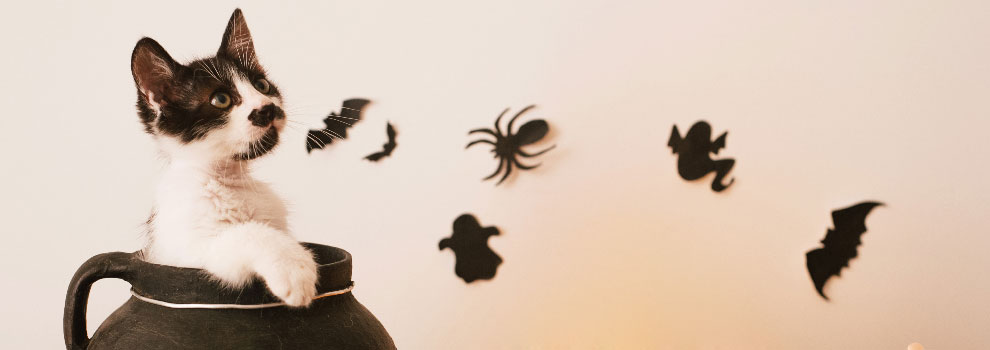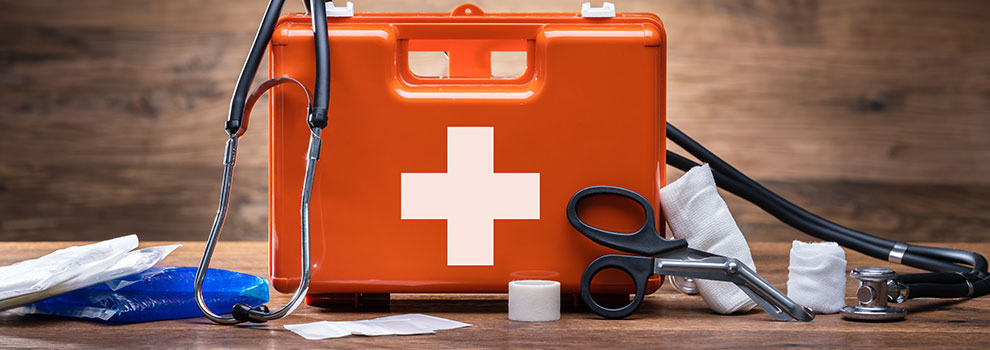Halloween is a highlight for kids and adults, but for pets, it’s often the most stressful night of the year. Between candy bowls, costumed strangers, and spooky Halloween decorations, the risks are everywhere.
The good news?
With a little preparation, you can keep your four-legged friends safe, calm, and happy while still enjoying the holiday.
Keep Candy Out of Reach

Most pets can’t tell the difference between a treat and a toxin. Halloween candy is one of the biggest dangers. Chocolate is highly toxic to dogs and cats. Even small amounts can trigger vomiting, tremors, or seizures. Xylitol, a common sweetener in sugar-free gums and candies, is even more dangerous. A tiny dose can cause liver failure in dogs.
It’s not just the candy itself. Raisins can harm the kidneys. Discarded wrappers or lollipop sticks can choke or block the digestive tract.
One client of mine left a candy dish in their car. Their Border Collie polished off a pack of sugar-free gum and ended up at the emergency vet. Since then, they store every treat in sealed containers, well out of reach. This simple habit will prevent heartbreak.
If you want to understand more about what’s safe and unsafe to feed your dog, check out our guide on human foods for dogs.
Choose Pet Costumes Carefully

Dressing pets up is fun for us, but not always safe for them. Costumes with dangling parts can be choking hazards. And tight straps can cause overheating and/or restricted movement.
If your pet paws at their outfit or refuses to move, that’s a clear “no.” Pet safety options include festive bandanas or themed collars. I once tried to turn my cat into a pumpkin. She stiffened like a statue until I removed it. Comfort always beats cuteness.
If your pet allows being dressed up for Halloween, time for a photo. Consider brushing up on some pet photography tips.
Spot the Signs of Stress Early
Even without candy or costumes, Halloween itself can overwhelm pets. Doorbells, flashing lights, and strangers in masks create sensory overload.
Watch for early stress signals: dogs may pace or whine, while cats often hide or groom excessively. Catching these cues early lets you step in before panic sets in.
You can ease anxiety with calming aids like white-noise machines or snug anxiety wraps. Familiar toys and blankets also help. The goal is simple: turn Halloween chaos into something predictable and safe.
If stress is a recurring issue, and not just on the holiday. You may also find our article on pet allergy symptoms and treatments helpful. Sometimes what looks like anxiety has an underlying health cause.
Manage Noise and Trick-or-Treat Visitors
The endless stream of trick-or-treaters is exciting for kids but exhausting for pets. Constant doorbell rings and open doors make escape more likely.
Set up a quiet room stocked with a bed, toys, and water. Calming music or background noise masks the commotion. And always double-check ID tags and microchip registration in case your pet slips out. Some planning here prevents one of the most common Halloween heartbreaks: lost pets.
Secure Decorations and Hazards

Spooky décor delights us but tempts pets. Glow sticks may cause drooling and stomach upset. Candles and jack-o’-lanterns are fire hazards. Fake cobwebs and plastic trinkets can choke or block the intestines.
Whenever possible, swap in pet-safe alternatives. LED candles instead of flames, sturdy decorations instead of fragile ones. You’ll enjoy the atmosphere without the anxiety.
Hazards Beyond Candy
Halloween parties add another risk: alcohol. Even small amounts of beer, wine, or cocktails can poison pets. Fatty meats, bones, and seasoned snacks also spell trouble.
Think of Halloween the way you think of Thanksgiving. Food everywhere, most of it off-limits to your pet. Staying vigilant is the best prevention.
Want to be better prepared for any mishap? Building a pet first aid kit is a smart year-round precaution.
Decide Wisely About Trick-or-Treating With Pets
Bringing your dog along for trick-or-treating sounds fun, but for most pets, it’s overwhelming. Costumes, crowds, and noise can quickly turn stressful.
If your dog truly enjoys the outing, make safety the priority. Use reflective gear, a sturdy leash, and carry water. Keep them close, and never leave them tied outside while you head to a door. When in doubt, let them relax at home.
And remember, Halloween isn’t the only time to plan outings. See our list of places to take your dog in Utah Valley for safer alternatives.
Know What to Do in an Emergency

Even with precautions, accidents happen. Vomiting, drooling, rapid breathing, or seizures after eating something suspicious should never be brushed off.
Call your local veterinarian or the ASPCA Animal Poison Control Center (888-426-4435) right away. Save these numbers in your phone before Halloween so you’re ready if the worst happens.
Halloween Pet Safety Tips Checklist
Halloween can be safe and fun for everyone, including pets. Think of it as storm-proofing your home. Secure hazards, set up safe spaces, and know your emergency plan.
Quick checklist:
- Candy and wrappers sealed away
- Comfortable (or no) costumes chosen
- Quiet room ready with calming aids
- Decorations are placed safely out of reach
- ID tags and microchip info updated
- Vet and poison control numbers saved
Your pet doesn’t need candy or costumes to enjoy the night. What they need most is comfort, safety, and your attention. With these tips, you can relax and enjoy Halloween knowing your best friend is protected.
 All About Pets
All About Pets 

